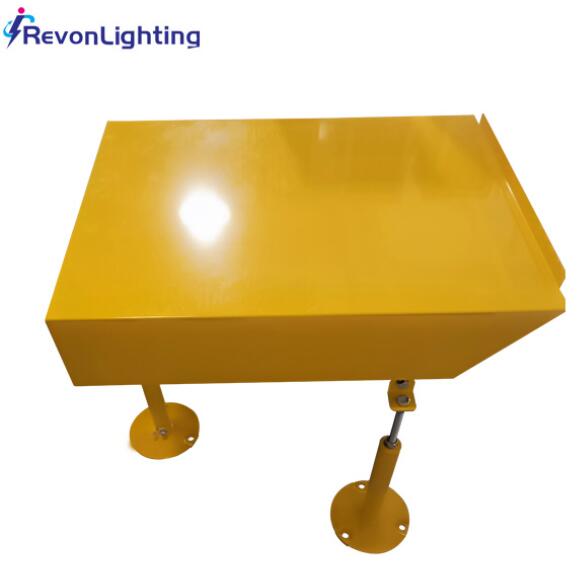Airports are complex ecosystems that require intricate coordination and a plethora of technologies to ensure the safety and efficiency of aircraft operations. One critical component of this system is the Precision Approach Path Indicator (PAPI), a visual aid that helps pilots maintain the correct approach path during landing. This article explores the significance, operation, and advancements of airport papi in modern airports, highlighting their crucial role in aviation safety.
The Role of airport papi
Airport papi is essential for safe aircraft landings, providing pilots with vital information about their approach path relative to the ideal glide slope. The system consists of a series of lights positioned beside the runway, which emit a combination of red and white lights. These lights change color depending on the angle at which they are viewed by the pilot. When the aircraft is on the correct glide path, the pilot will see an equal number of red and white lights. If the aircraft is too high, more white lights will be visible, while more red lights indicate that the aircraft is too low.
Operation and Configuration
A standard airport papi consists of four light units, usually placed on the left side of the runway. Each light unit contains a precision lens and a high-intensity lamp, which create the red and white light signals. The units are aligned so that their beams converge at a specific angle, typically corresponding to a glide slope of 3 degrees, although this can vary based on the airport's specific requirements.

The lights are set up in such a way that each unit's beam is split into two colors: red for the lower half and white for the upper half. This setup allows pilots to easily determine their aircraft's position relative to the desired approach path. The configuration and calibration of PAPI lights are crucial, as even minor deviations can lead to incorrect indications, potentially jeopardizing safety.
Importance of PAPI in Aviation Safety
The primary advantage of airport papis is their simplicity and reliability. Unlike more complex electronic systems, PAPI relies on straightforward visual cues that can be easily interpreted by pilots, even in adverse weather conditions. This simplicity makes PAPI a vital backup to more sophisticated Instrument Landing Systems (ILS), ensuring that pilots have a dependable reference even if electronic systems fail.
| Airport papi | Precision Approach Path Indicator |
| 12 | 67 |
airport papis are particularly beneficial at smaller airports that may not have the resources to install and maintain advanced landing aids. By providing a cost-effective solution for visual approach path guidance, airport papis enhance safety at these airports, contributing to the overall safety of the aviation industry.
Technological Advancements in airport papi
While the basic principles of PAPI have remained unchanged for decades, technological advancements have led to significant improvements in their performance and reliability. Modern airport papis are now equipped with LED lights instead of traditional incandescent bulbs. LEDs offer several advantages, including longer lifespan, lower power consumption, and better visibility in various lighting conditions. These enhancements reduce maintenance costs and improve the overall reliability of the system.
Additionally, some modern airport papis incorporate remote monitoring capabilities, allowing airport personnel to check the status of the lights and make adjustments or repairs as needed without physically inspecting each unit. This remote capability ensures that airport papis remain in optimal working condition, further enhancing safety and efficiency.
Challenges and Future Developments
Despite their reliability, airport papis are not without challenges. Environmental factors, such as fog, heavy rain, and snow, can reduce the visibility of PAPI lights, making it difficult for pilots to see the indications. To address this issue, airports often complement airport papis with other visual and electronic landing aids to provide multiple layers of guidance.
Looking ahead, the integration of airport papis with advanced navigation technologies is a promising area of development. For instance, combining PAPI with satellite-based augmentation systems (SBAS) can provide more precise approach path information, especially in challenging terrain or in areas where traditional ILS installations are not feasible.
Case Studies: airport papi in Action
Several airports around the world have successfully implemented airport papis to enhance their landing safety. For example, London Heathrow Airport, one of the busiest airports globally, relies on airport papis to manage the high volume of landings efficiently. The system's reliability ensures that aircraft can land safely even during peak traffic periods.
In contrast, smaller regional airports, such as those in remote areas of Australia, use airport papis to provide essential visual guidance to pilots. These airports often lack the infrastructure for more sophisticated landing aids, making airport papis a critical component of their safety measures.
Conclusion
The Precision Approach Path Indicator (PAPI) airport papi system is a vital tool in the aviation industry, providing pilots with crucial visual cues to ensure safe landings. Its simplicity, reliability, and cost-effectiveness make it an indispensable part of airport infrastructure. As technology continues to advance, airport papis will likely become even more effective, incorporating new features and capabilities to further enhance aviation safety. Whether at major international hubs or small regional airports, airport papis play a crucial role in guiding aircraft safely to the ground, underscoring their importance in the ever-evolving world of aviation.